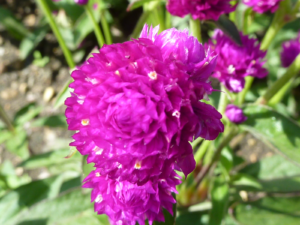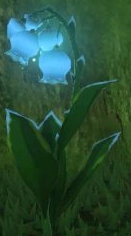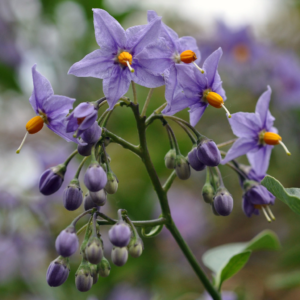
The Flowers of Hyrule
There’s a world where plants and flowers can boost abilities or upgrade armor protection. In Breath of the Wild, the Zelda series’ most recent and its first open-world video game, players freely roam the land of Hyrule on their quest. The map of Hyrule is filled with all kinds of collectibles, including plants and flowers, to incentivize exploring every inch of space.

The flowers in Breath of the Wild largely serve as materials used for boosting Link’s abilities or upgrading his armor. They’re found all across Hyrule, though they vary considerably in scarcity and value. Today, I’d like to look at six of these flowers and compare them to their real-world counterparts, if any. Some are a little more fantastical than others!
Starting off easy, there are two flowers in the game that have very obvious real-world counterparts: swift violets and mighty thistles. Swift violets, used for boosting speed, closely resemble…well, violets. On the other hand, attack-boosting mighty thistles don’t look exactly like our thistles. While they look somewhat like a closed thistle bud, the bright orange color and sharp, pointy tip is distinctly out of this world.




Armoranths, ingested for a defense boost, are a little more obscure. The round, compact bulbs in the game look nothing like draping amaranthus. However, they look a lot like gomphrena (albeit a bit larger,) and another name for gomphrena is globe amaranth. Unlike armoranths, gomphrena comes in quite a few different colors, and while it’s theoretically edible, the texture of the flowers makes them better suited for tea.


Blue nightshade, used to help Link move quietly and stealthily, is a bit of a misnomer. While both blue nightshade and real-world nightshade have drooping buds, real-world nightshade is more often found in purple and white with a distinct, spiky shape to its petals. Blue nightshade more closely resembles a lily of the valley with the color of a bluebell. Notably, however, neither flower glows in the dark like blue nightshade does in-game.




Safflina, which comes in three varieties and increases Link’s resistance to different elements, was difficult to identify. The plant has a name that reminds me of safflower or saffron. However, neither flower looks like any type of safflina; safflower is a short, thistle-like flower, and saffron’s flowers are large and wide, not tall and thin. Safflina more closely resembles salvia in both its shape and the colors it’s found in. The names are similar, but just different enough to throw you for a loop!


Finally, perhaps the most important flower in Breath of the Wild is the silent princess. It is one of the most scarce materials in the game, only found in certain remote locations on the map. It also carries symbolic weight, representing the one and only Princess Zelda and appearing in the game’s logo. The five-pointed bloom resembles nightshade, ironically more than blue nightshade does. The coloration of the plant is reminiscent of a stargazer lily, albeit blue instead of pink. Its closest match in both color and shape is columbine. It’s perhaps fitting that a flower so magical and special in the world of Hyrule has no exact match to be found in our own world.




Breath of the Wild has so many little details to create this world, and the variety of plants and flowers you can pick up is just one of them. The Legend of Zelda: Tears of the Kingdom is scheduled for release on May 12th, 2023 with, hopefully, even more Hylian wildflowers. In the meantime, if you’d like a bouquet of not-quite-Hylian wildflowers, just give us a call!

PaulinaJune 21, 2023
Mighty thistle is the flower kniphofia!
adminJune 23, 2023
Wow! I’ve never heard of that flower; thanks for helping us learn something new!